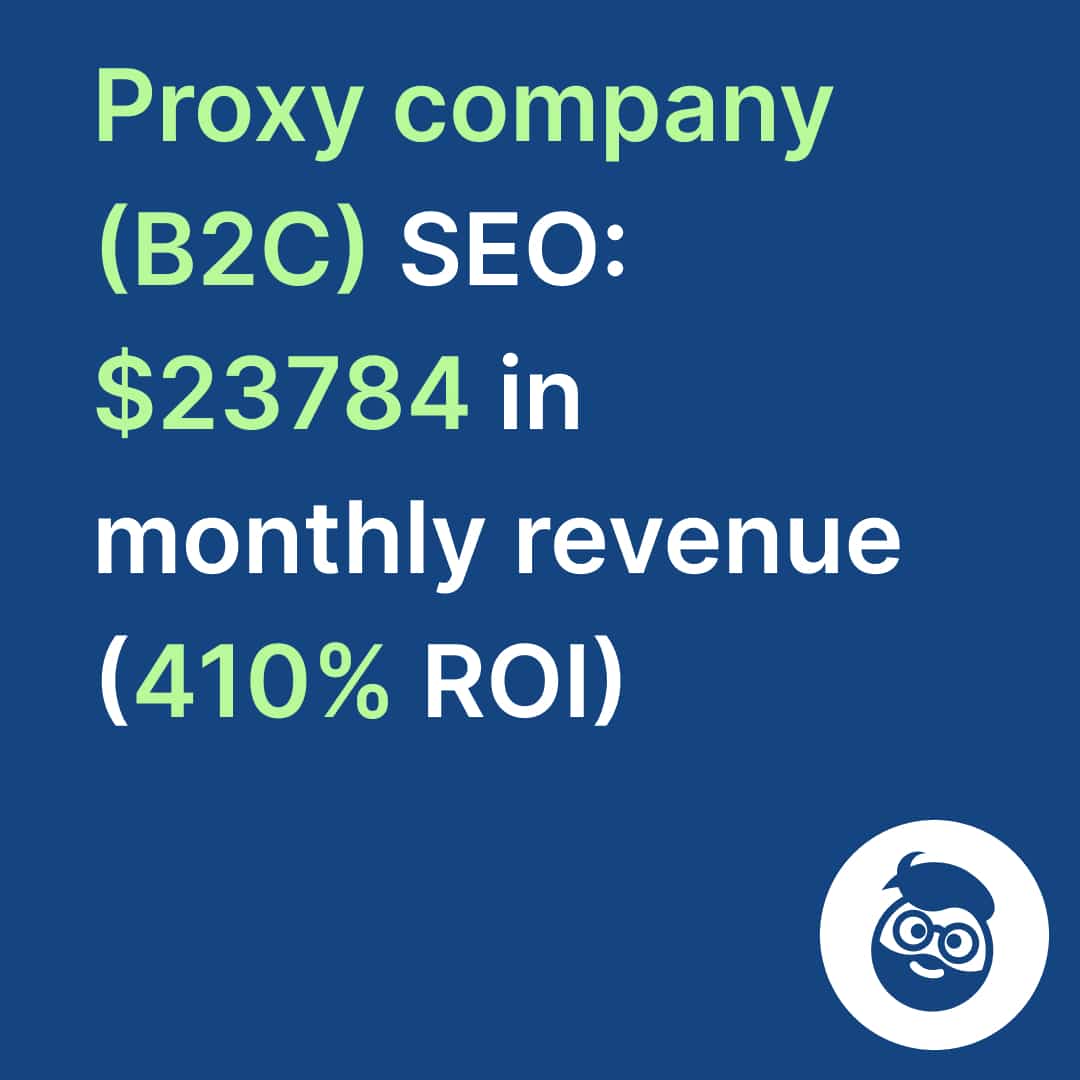Choosing between a subdomain and a subdirectory can have far-reaching implications on one’s SEO strategy in the intricate world of website structuring. The strategic implementation of either a subdomain or a subdirectory reflects significantly on search engine rankings, audience targeting, and content organization. This article highlights these structural components’ vital role in website hierarchy and how their effective operation can drive an efficient SEO approach.
- Role of subdomains in website architecture
- Impact of using subdirectories in the website hierarchy
- Consequences of applying either a subdomain or subdirectory for SEO efforts
- Influence of your choice between a subdomain vs subdirectory SEO impact on Google’s perception
- Comparative analysis: Subdomain vs. Subdirectory – Which design structure yields better SEO results?
Understanding the Basics: What are Subdomains and Subdirectories?
A snapshot of what a subdomain represents in website structure
In the landscape of website architecture, subdomains hold pivotal importance. A subdomain, put, is a separate section of your domain functioning as an individual entity while still being a part of the main domain (forcingseostrategy.com/blog vs blog.forcingseostrategy.com). Choosing between setting up a subdomain or using paths on your main domain (subdirectories) can significantly impact your search rankings – that’s your SEO strategy. Establishing a subdomain effectively creates an independent platform within your site, allowing content categorization and audience-targeting endeavors to flourish. If you aim high for SEO best practices, understanding how this division plays out in your website structure is imperative.
- Sale!

SEO Content Audit
Original price was: 1999,00 €.1799,00 €Current price is: 1799,00 €. Select options - Sale!

Search Rankings and Traffic Losses Audit
Original price was: 3500,00 €.2999,00 €Current price is: 2999,00 €. Select options - Sale!

Full-Scale Professional SEO Audit
Original price was: 5299,00 €.4999,00 €Current price is: 4999,00 €. Select options
A close look at the role and influence of a subdirectory within website architecture
Switching lenses to scrutinize subdirectories closely, one soon realizes their profound influence in the labyrinth of website hierarchy. A subdirectory is part of the main website domain, acting as a folder (forcingseostrategy.com/blog). This format refines the user experience by simplifying navigation paths on your site (think breadcrumbs), paving the way for improved indexing by search engine bots. Subdirectory usage often trumps all for better SEO and wholesome viewer engagement. However, don’t just take this at face value – understand how this impacts your site structure and your SEO approach.
Investigating the Impact Subdomains Vs. Subdirectories Have on SEO
Measuring the SEO effects triggered by opting for either subdomains or subdirectories
The decision between applying a subdomain vs. subdirectory SEO impact might seem like splitting hairs, yet it bears substantial implications on search rankings. Sites structured with organized subdirectories tend to fare better with winning over search engine algorithms because their unified entities are identified as amplified content depth and relevance in specific thematic areas. Conversely, employing multiple individualistic content-bearing entities (subdomains), while advantageous in multi-product aesthetics terms or distinctly targeted language variations scenarios, often labors under the state-of-separate-websites effect that could potentially dilute SEO influence.
Understanding trade-offs involved when deploying either a subdomain or a subdirectory framework.
To carve out your best route through this dichotomous choice to attain ultimate SEO success: zero repeat info dynamics; employ robust strategy differentiation directed towards boosting SEO reach; equip analytical frameworks to bolster authority; center best practices that fortify relevance; all leading up to defining whether utilization of singular cohesive entities or individualized sections favors better SEO impact along with user engagement on your sites.
The Role of Subdomains in Website Hierarchies
How subdomains affect a website’s structural hierarchy
Subdomains play a significant role within a website’s hierarchy. They function as autonomous units, each with the potential to rank separately on search engine result pages (SERPs). To clarify, subdomains can even host standalone sites under the umbrella of the main domain (Yes, it’s like an inception of websites!). The real deal is that in terms of SEO impact, subdomain vs. subdirectory is subject to your site’s circumstances and goals. So, let’s be clear-minded: opting for subdomains could signify an ingenious and strategic move for businesses seeking to differentiate various website sections while reaping distinct SEO advantages.
The repercussions of your choice of subdomain on SEO practices
Impacts from your decision between a subdomain and subdirectory shouldn’t be taken lightly; every little nuance matters here. Subdomains allow for better SEO when catering to distinctly varied content or targeting specific geographical markets. But that’s not all: deploying subdomains can provide a practical framework for testing innovative SEO strategies without endangering the standings of your tippy-top-level domain! Consequently, this allows savvy marketers to experiment with viable ways to improve their SEO.
Utilizing Subdirectories for Simplified Site Navigation
Making sense of how subdirectories enhance web navigation and user experience
The role of a good subdirectory is often underestimated, but boy, it’s as critical as the foundations of a sky-high skyscraper! Executed well, they further simplify site navigation and dramatically improve user experience. Here’s the savvy-business-owner 411: With admirable intuitiveness, uncluttered layout, and cohesive branding – thank you very much for well-implemented subdirectories – you up your chances at lower bounce rates, increased dwell time and improved ranking potential.
Unveiling the relationship between effective use of subdirectories and optimized SEO results
Ah, yes, correlations! Gauging connections between outcomes helps us make sense of complex systems. One such correlation? Harnessing the power of effective use of subdirectories leading to juice-sweet optimized SEO results. Operating under one unified domain provides us with more consolidated ‘link juice,’ and though consolidation may initially sound boring – believe me when I say it isn’t – because this can result in more substantial domain authority and better SEO success across the entire site.
The Influential Role of Subdomains and Subdirectories in SEO Strategy
The reach of subdomains and subdirectories in shaping SEO
Your strategy for your site’s structure can mean distinguishing between a fledgling SEO presence and dominating the search rankings. This is where the choice between subdomains and subdirectories comes into play. Deploying subdomains can lead to an expanded web presence, offering diverse content, niche targeting, and potentially attracting various demographics. On the other hand, using subdirectories could consolidate your content under one indexed website, possibly leading to a more substantial site authority overall. Hence, selecting between a subdomain vs subdirectory SEO impact is critical in sculpting an efficient SEO strategy.
Examining how subdomains versus subdirectories influence SEO performance
One must also dive deeper to understand the distinct implications of choosing between these routes. If you’re wondering about whether to set up a blog subdomain or utilize a domain subdirectory for better SEO, let us break it down. While a well-maintained blog on a subdomain can reel in significant traffic and offer specific information, consolidating all your blog posts under one roof in a subdirectory can enhance your website’s ranking power. The key lies in developing good SEO practices regardless of whether you opt for the more autonomous route of a subdomain or choose to streamline your content via a subdirectory.
The Effects of Subdomain Vs. Subdirectory Choice on Google’s SEO Perception
How Google perceives your website based on the use of either a subdomain or a domain
Choosing a domain-specific formulation like ‘blog.yoursite.com’ (subdomain) or adding to your main website body as ‘yoursite.com/blog’ (subdirectory) also significantly shapes how Google perceives your websites for indexing. To clarify, Google considers each unique URL as an individual unit – this means that when choosing a separate blog. The subdomain approach might offer intensified targeting with a more standalone feel for users, but you’ll equally need to carry out individual branding and build authority from scratch. However, utilizing domain.com/blog (subdirectory), type layers can build upon existing authority and present everything as one entity to Google.
Analyzing how changes made to Google’s SEO are influenced by choices regarding domains
Consider using cold complex numbers—if 100 people direct their trajectories toward your site. Com/blog’ would yield more traction than if those 100 were divided amongst different. ‘blog.yoursite.com’ type pages since search engines view them as separate entities. Reaping benefits from su, ch choice,e shared predicated on SEOsistent be st seo includes the w, including creating high-quality content and nurturing relevant backlinks, among others.
Subdirectory SEO Impact Vs. Subdomain: A Comparative Analysis
Comparing the SEO impact of subdirectories and subdomains
When deciding which framework to use for your website, the subdomain vs subdirectory SEO impact debate is critical. Integrating a subdirectory into your website’s URL structure can significantly improve your SEO. It functions as a segment of your site, making it ideal for organizing content logically and user-friendly. Google will view this content as part of your primary domain, potentially enhancing your overall authority. A subdirectory structure’s simplicity and streamlined design can lead to better SEO.
On the other hand, subdomains are treated as separate entities by Google, acting almost like independent websites. This could be advantageous if you’re seeking to establish a distinct brand identity or want different sections of your website to rank independently in search results. However, this may dilute the overall SEO value accumulated by the main domain. So, while they each have their merits, from an SEO standpoint, choosing the right one boils down to understanding each structure’s contribution and evaluating their compatibility with your website goals.
Unraveling the differences between a subdomain and a subdirectory impact on websites
A deeper analysis reveals more nuanced differences in SEO outcomes when considering your site’s subdomain or subdirectory hierarchy. Blogs housed under subdirectories might absorb good SEO juice from the leading website due to perceived cohesion. Everything under one roof principle suggests consolidation power – search engines tend to answer favorably to unified content presented within an overarching domain.
Conversely, blogs set up on a separate subdomain have been subjected to more scrutiny from search engines, possibly due to perceived fragmentation or lack of coherence about the leading site. However, recall that maintaining multiple domains implies juggling multiple sites, which may need more resources for other integral components such as link-building strategies or marketing campaigns.
Practical Application: Deciding Between a Subdomain or Subdirectory for Your Blog
Choosing wisely: Factoring in SEO when choosing a blog location
Addressing real-world applications: you’ve developed captivating blog content. You are now faced with this crucial decision – nestle it within your site (subdirectory) or give it its unique space (subdomain). Navigating the tumultuous sea of SEO may sway choice towards hosting under a subdirectory – increased traffic bolsters your main domain’s ranking significantly and enhances its authority on search engines.
However, if content diversification or branding differentiation is what you’re chasing, setting up on a polished standalone subdomain might make more sense. Remember that Google perceives each subdomain as an independent site – an opportunity for unique branding but might also require concerted SEO optimization efforts for visibility.
Balancing out benefits with drawbacks for maximum SEO impact
Here’s where strategic thinking kicks into high gear – Appreciate both sides when analyzing whether hosting under a subdomain or staying within the main domain works best for optimal blog performance. Factoring in aspects such as potential market reach and focus area diversity, amongst others, can offset some disadvantages inherently associated with each structure.
Subdomains offer excellent opportunities for segmentation, which is beneficial when targeting different customer personas, but run the risk of upsetting algorithm apple carts due to scattered authority across various domains, which complicates optimization efforts! On the contrary, consolidating all great content within one holistic profile boosts overall domain reputation and raises the profile through the roof. It could indeed become the best route to acquiring the golden ticket top tier Search Engine Ranking Position (SERP) kingdom – that prestigious coveted spot on Google page one.
A Comprehensive Analysis of Subdomains Vs. Subdirectories in SEO Strategy
| Section | Key Points |
|---|---|
| Understanding the Basics: What are Subdomains and Subdirectories? | – Subdomains are separate sections of a domain functioning as individual entities, while subdirectories are folders within the main domain. |
| The Effects of Subdomain Vs. Subdirectory Choice on Google’s SEO Perception | – Choosing between subdomains and subdirectories significantly impacts search rankings. |
| The Role of Subdomains in Website Hierarchies | – Subdomains function as autonomous units and can rank separately on SERPs. |
| Utilizing Subdirectories for Simplified Site Navigation | – Subdirectories simplify site navigation and improve user experience. |
| The Influential Role of Subdomains and Subdirectories in SEO Strategy | – Subdomains offer diverse content and niche targeting, while subdirectories consolidate content and enhance site authority. |
| – Subdomains are treated as separate entities, while subdirectories are viewed as part of the primary domain. | Subdirectory SEO Impact Vs. Subdomain: A Comparative Analysis |
| Subdirectory SEO Impact Vs Subdomain: A Comparative Analysis | – Subdirectories improve SEO by organizing content logically and enhancing domain authority. – Subdomains allow for distinct branding and independent ranking but may dilute the SEO value of the main domain. |
| Practical Application: Deciding Between a Subdomain or Subdirectory for Your Blog | The Effects of Subdomain Vs. Subdirectory Choice on Google’s SEO Perception |
| Balancing out benefits with drawbacks for maximum SEO impact | – Subdomains offer segmentation opportunities but may complicate optimization efforts. – Subdirectories simplify website structure and can lead to better SEO outcomes. |
The Powerful Influence of Website Architecture on SEO Strategies
Website architecture heavily influences the efficacy of your SEO strategy. This exhaustive investigation reveals that choosing between implementing a subdomain or operating within the confines of a domain (subdirectory) is integral to underpinning your site’s structure. Employing either framework influences audience targeting, traffic pull, and ranking prosperity, significantly shaping search algorithm favorability. Choose wisely whether you opt for the separate web presence allowed by subdomains or favor the unified content consolidation offered by using paths within your main domain (subdirectories), as it holds significant potential for shaping user experience and Google’s interpretation.
Frequently Asked Questions
How do Subdomains impact my website structure?
Subdomains contribute significantly to your site’s architecture. They function as independent units within your domain and have the distinct potential to rank independently on SERP (Search Engine Results Page). This autonomy is advantageous when you desire varied sections of your site to attract different audiences.
What role does using subdirectories play in my site?
Subdirectories act as folders within your primary domain, simplifying navigation paths across your site. This results in better indexing by search engine bots, improving SEO rankings.
How does Google perceive my site based on whether I use a Subdomain or Subdirectory?
Google perceives each unique URL as an individual unit for indexing purposes. If you choose a separate “blog.yoursite.com” approach, each will have its designated space and need individual branding for authority building from scratch. However, using a “yoursite.com/blog” type layer contributes towards existing authority and is perceived by Google as unified within one entity.
If I opted for Subdomains, would it positively affect my overall site’s ranking?
Subdomains are valuable when you host varied content types or cater to specific geographies; deploying them fosters innovative strategy testing without hampering your top-level domain standings. However, managing multiple domains can stretch resources thin, affecting consistency in maintaining best practices for superior SEO performance.
What benefits do I gain from leveraging Subdirectories on my website?
- Sale!

SEO Content Audit
Original price was: 1999,00 €.1799,00 €Current price is: 1799,00 €. Select options - Sale!

Search Rankings and Traffic Losses Audit
Original price was: 3500,00 €.2999,00 €Current price is: 2999,00 €. Select options - Sale!

Full-Scale Professional SEO Audit
Original price was: 5299,00 €.4999,00 €Current price is: 4999,00 €. Select options
Using well-planned and cleanly laid out directories enhances navigation intuitiveness, improves dwell time, reduces bounce rates, and boosts ranking opportunities considerably, all spiraling into making the navigational experience seamless, thus attracting greater user engagement.






